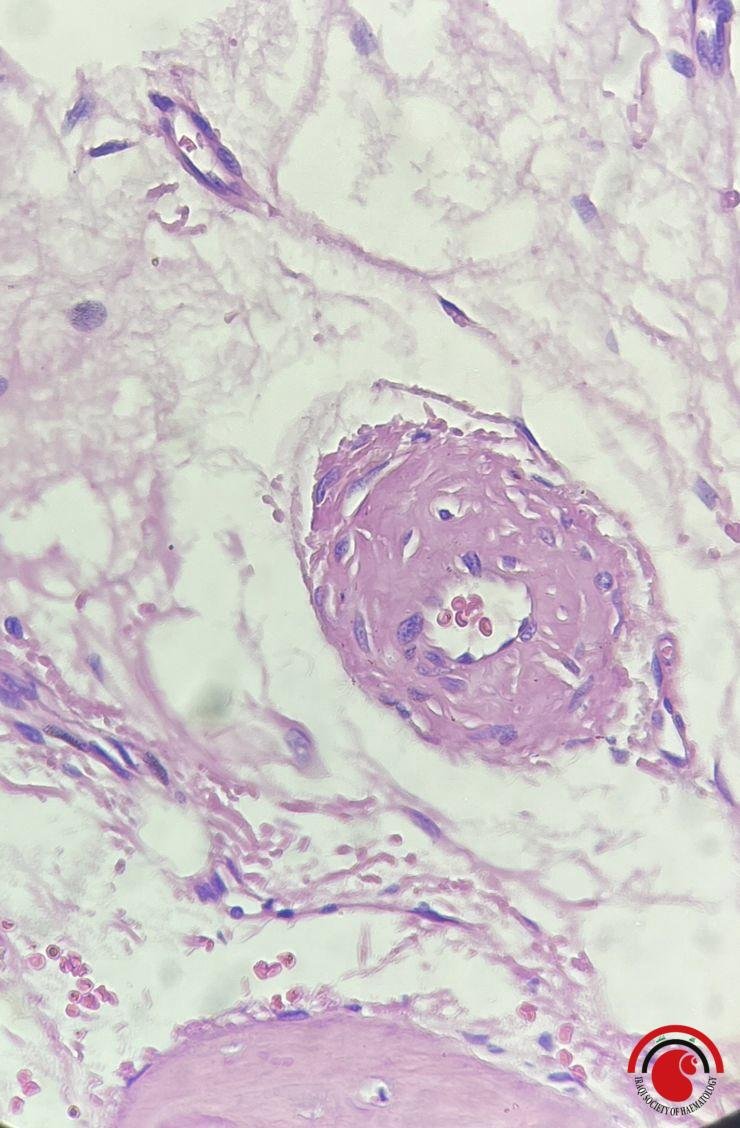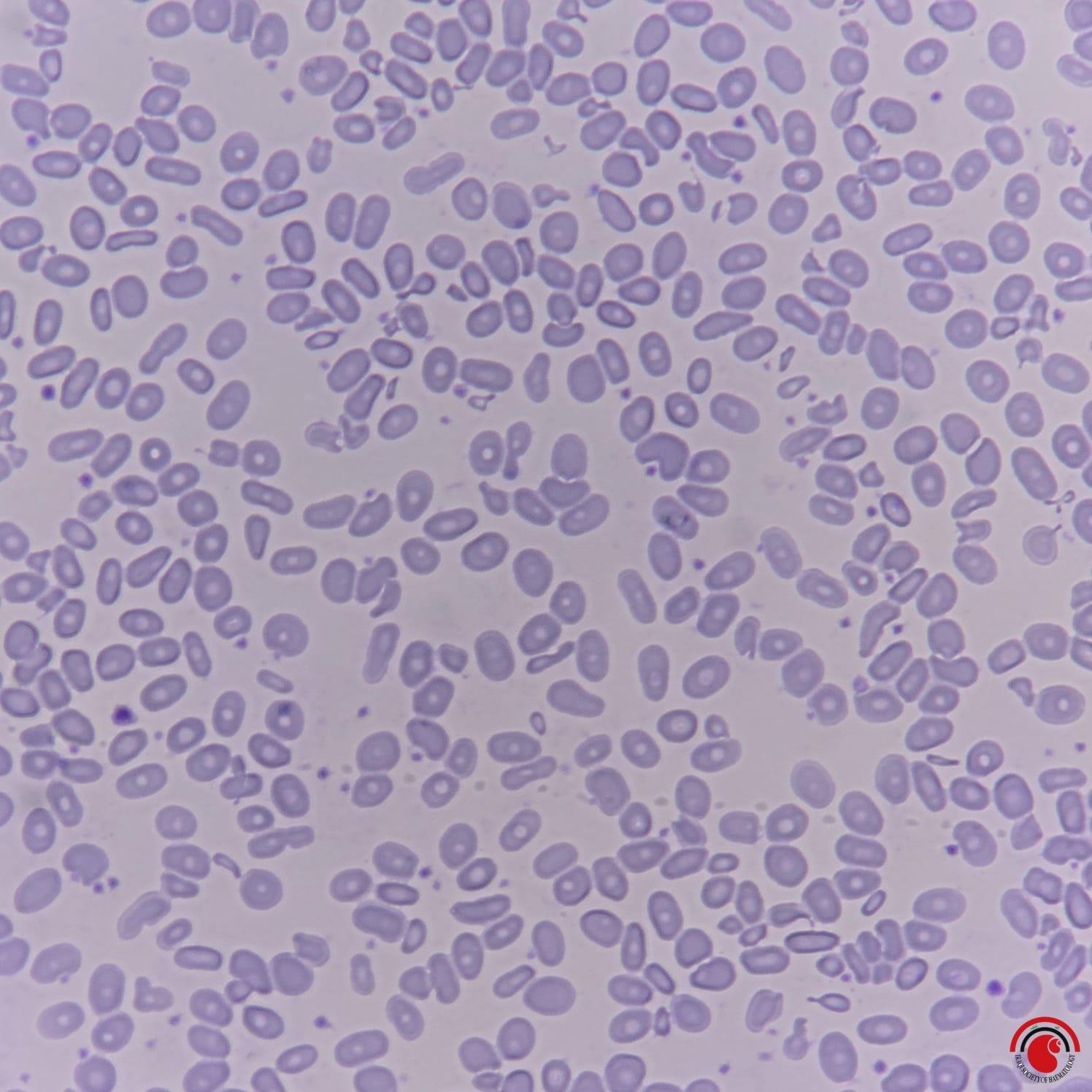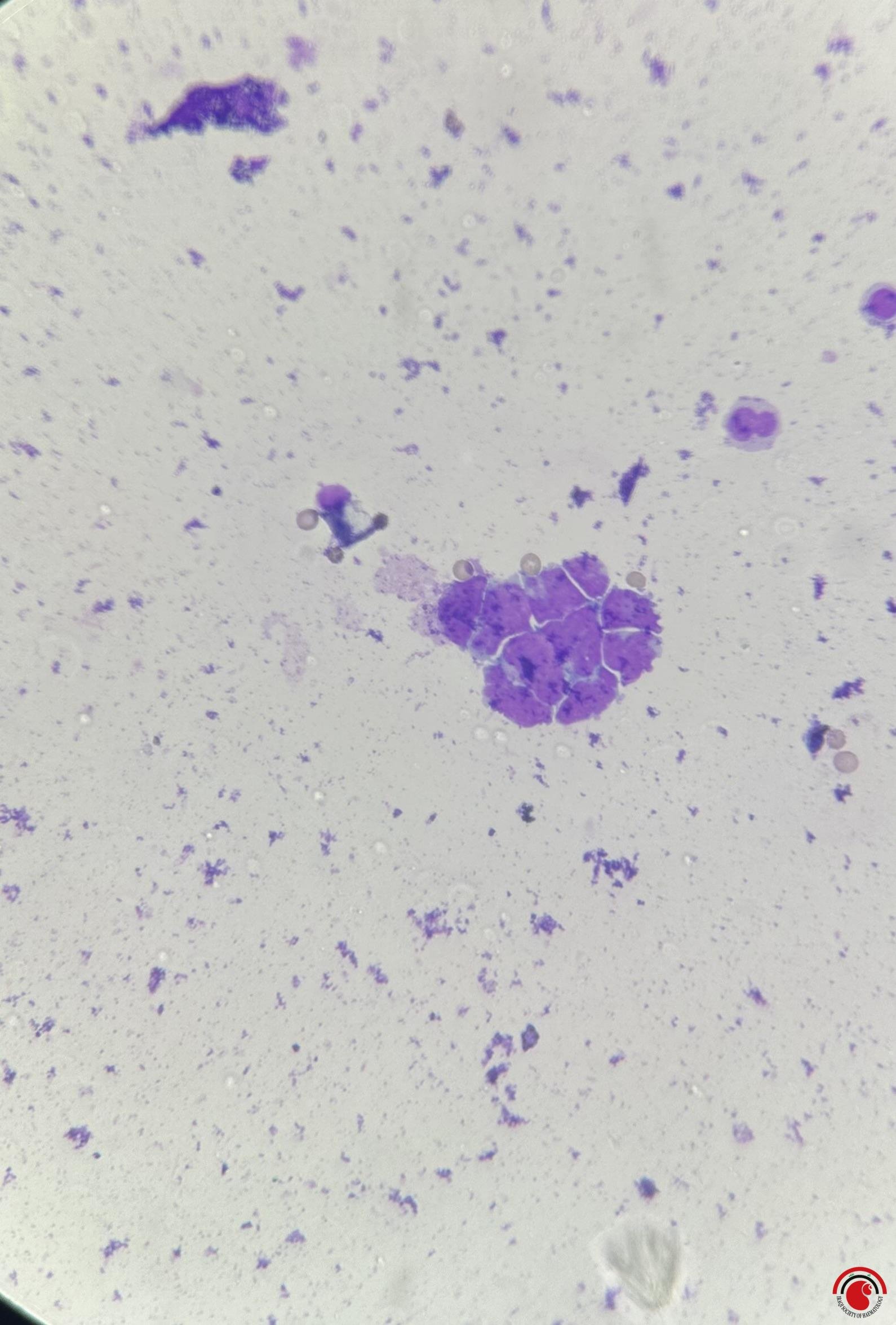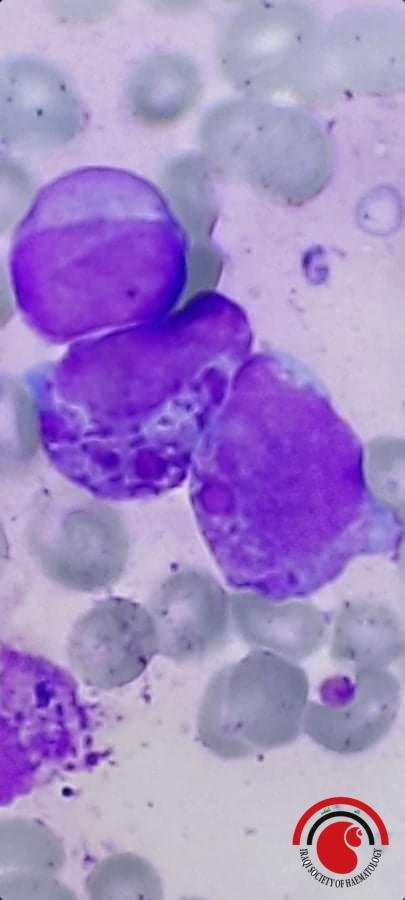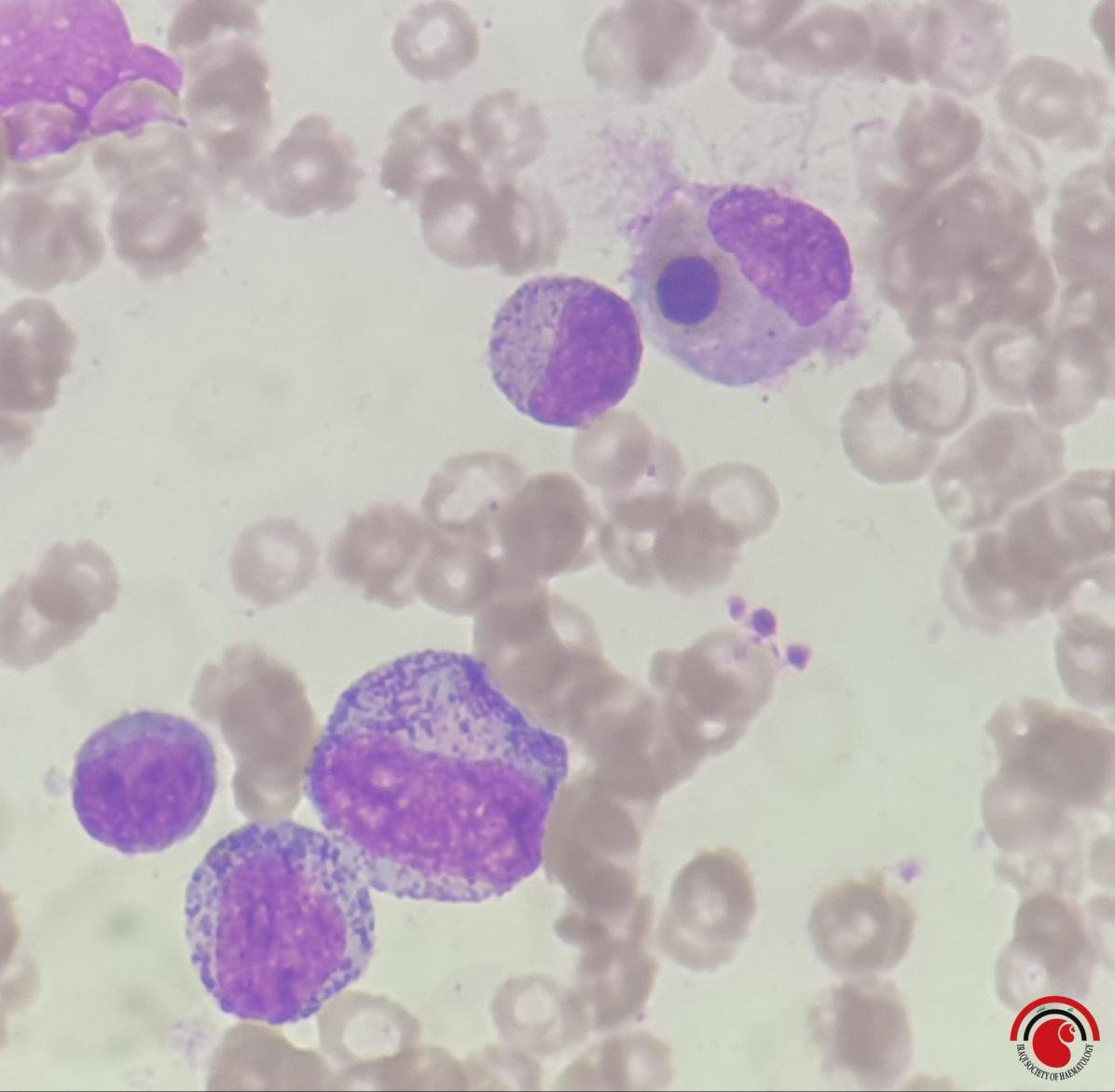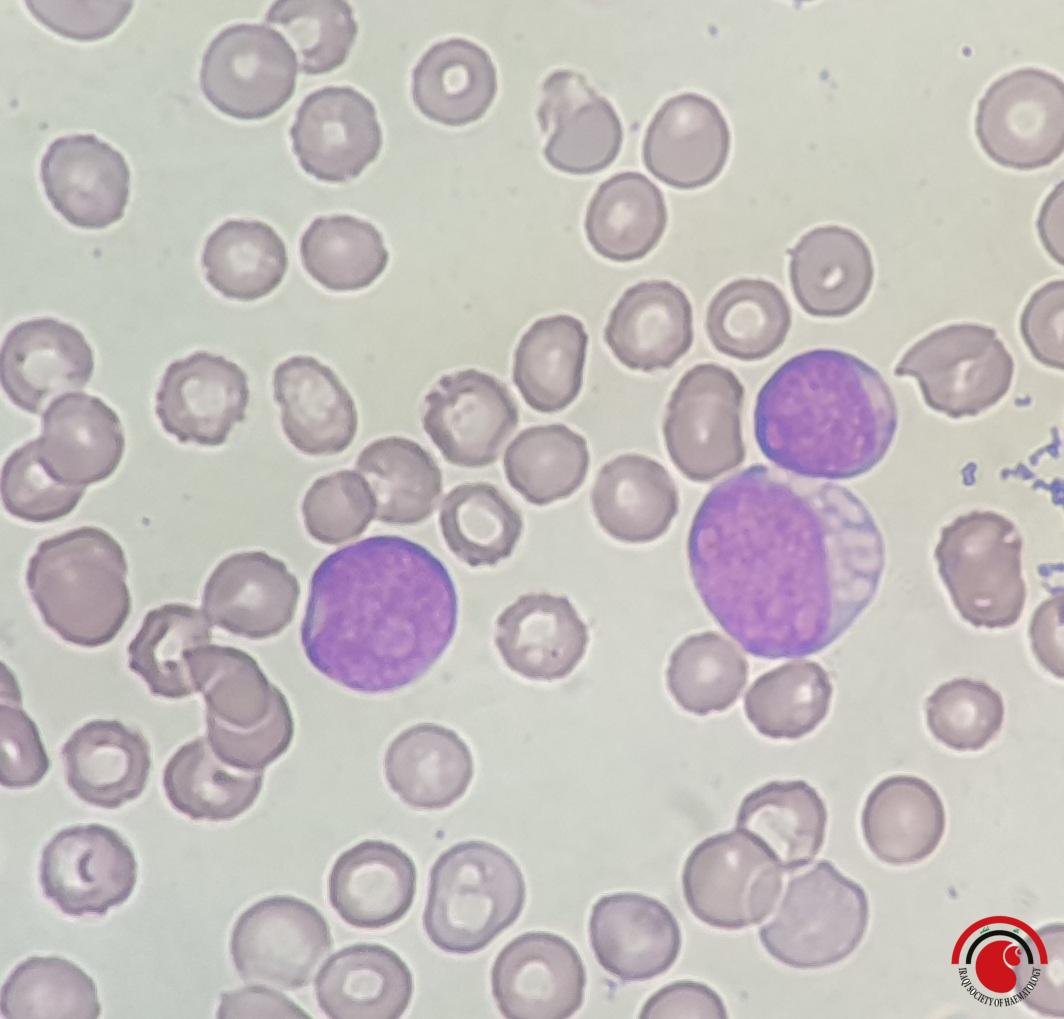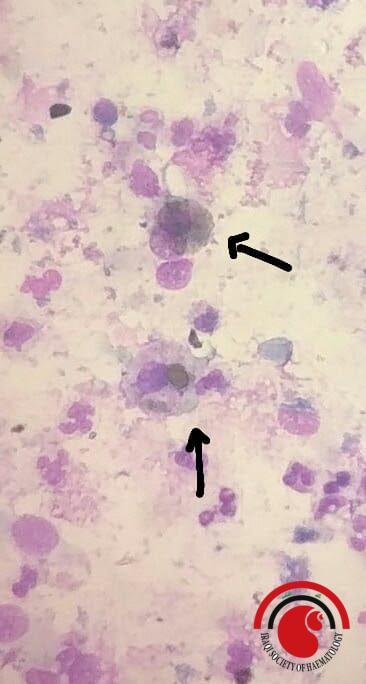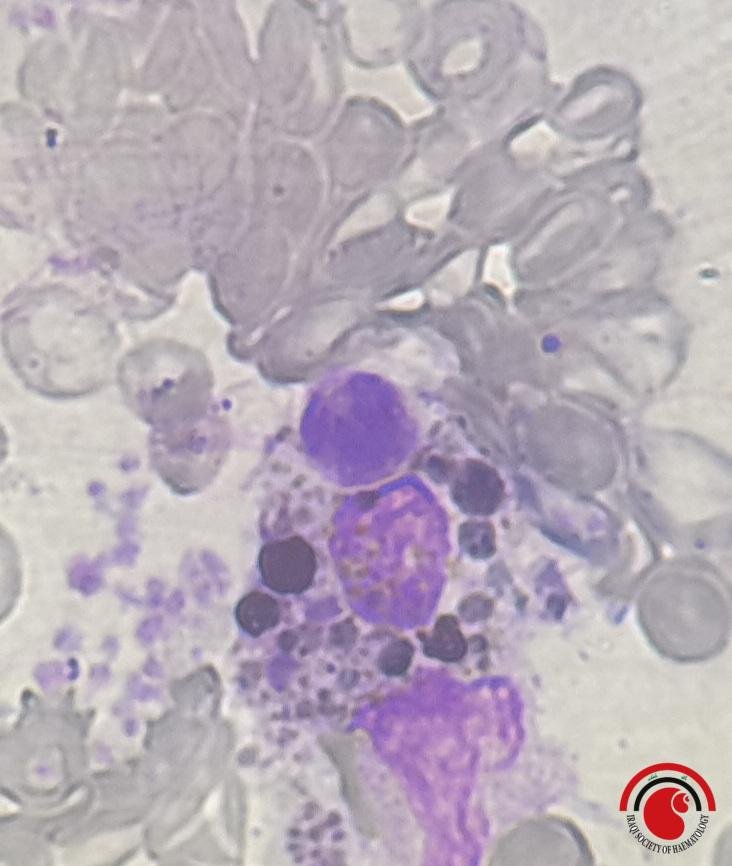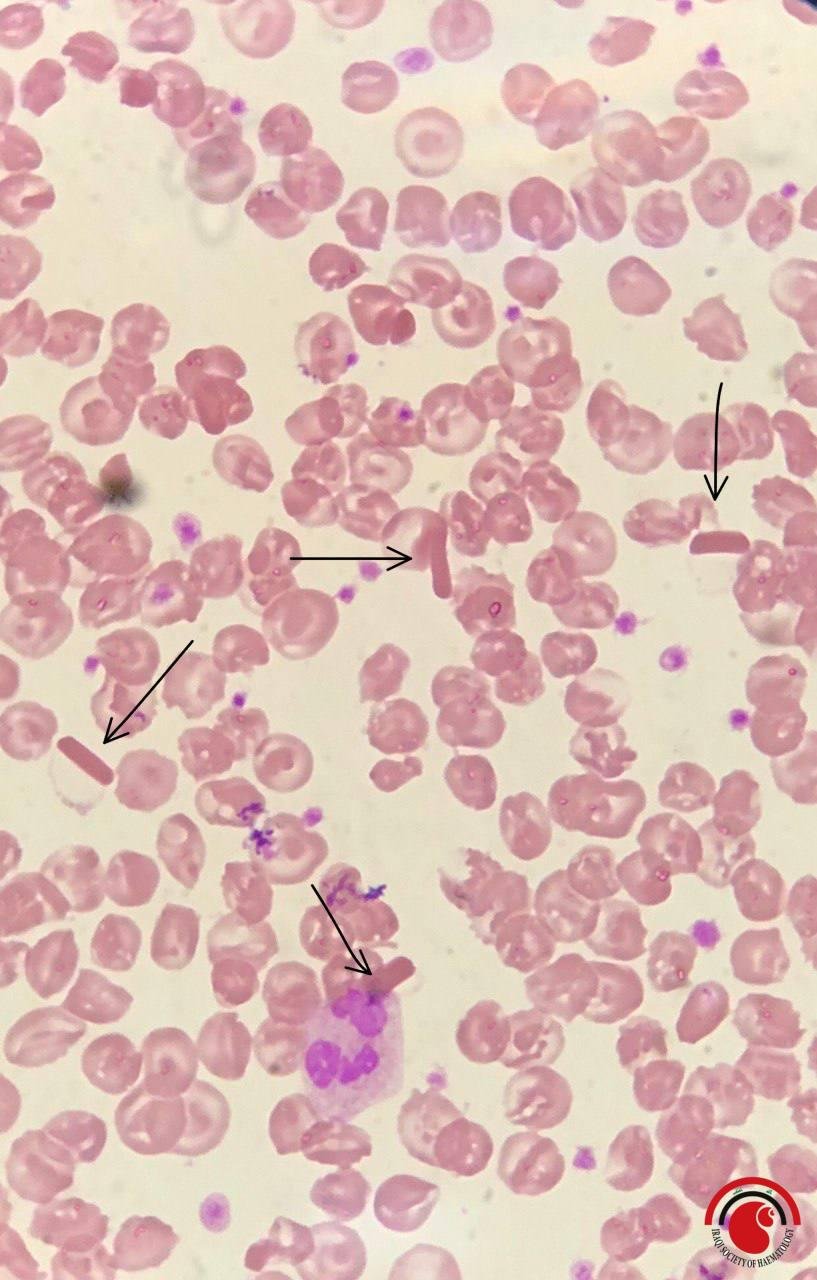Featured Image

Case Title: Sezary cell
Category: T-cell type Non-Hodgkin lymphoma
Author(s): Dr. Bassam Francis Matti, MD, Consultant hematologist; Dr. Zahraa Akram Thabit, Hematopathologist
Case Description: Sézary syndrome is a rare aggressive subtype of cutaneous T-cell lymphoma. It is closely related to mycosis fungoides and is presented with erythroderma, generalised lymphadenopathy and circulating malignant T cells (Sézary cells). This peripheral blood smear shows two typical Sézary cells. The cells are medium-sized to large with abundant, irregularly shaped and basophilic cytoplasm. The shape of the nucleus is very irregular, hyperconvoluted with a cerebriform pattern. Nuclear chromatin is condensed, nucleoli are not visible. Cerebriform appearance of the nucleus is a typical finding in Sézary syndrome.
Date : 2024-06-22
Submitted By : Dr. Zahraa Akram Thabit

Case Title: Sezary cell
Category: T-cell type Non-Hodgkin lymphoma
Author(s): Dr. Bassam Francis Matti, MD, Consultant hematologist; Dr. Zahraa Akram Thabit, Hematopathologist
Case Description: Sézary syndrome is a rare aggressive subtype of cutaneous T-cell lymphoma. It is closely related to mycosis fungoides and is presented with erythroderma, generalised lymphadenopathy and circulating malignant T cells (Sézary cells). This peripheral blood smear shows two typical Sézary cells. The cells are medium-sized to large with abundant, irregularly shaped and basophilic cytoplasm. The shape of the nucleus is very irregular, hyperconvoluted with a cerebriform pattern. Nuclear chromatin is condensed, nucleoli are not visible. Cerebriform appearance of the nucleus is a typical finding in Sézary syndrome.
Date : 2024-06-22
Submitted By : Dr. Zahraa Akram Thabit

Case Title: Sezary cell
Category: T-cell type Non-Hodgkin lymphoma
Author(s): Dr. Bassam Francis Matti, MD, Consultant hematologist; Dr. Zahraa Akram Thabit, Hematopathologist
Case Description: Sézary syndrome is a rare aggressive subtype of cutaneous T-cell lymphoma. It is closely related to mycosis fungoides and is presented with erythroderma, generalised lymphadenopathy and circulating malignant T cells (Sézary cells). This peripheral blood smear shows two typical Sézary cells. The cells are medium-sized to large with abundant, irregularly shaped and basophilic cytoplasm. The shape of the nucleus is very irregular, hyperconvoluted with a cerebriform pattern. Nuclear chromatin is condensed, nucleoli are not visible. Cerebriform appearance of the nucleus is a typical finding in Sézary syndrome.
Date : 2024-06-22
Submitted By : Dr. Zahraa Akram Thabit

Case Title: Sezary cell
Category: T-cell type Non-Hodgkin lymphoma
Author(s): Dr. Bassam Francis Matti, MD, Consultant hematologist; Dr. Zahraa Akram Thabit, Hematopathologist
Case Description: Sézary syndrome is a rare aggressive subtype of cutaneous T-cell lymphoma. It is closely related to mycosis fungoides and is presented with erythroderma, generalised lymphadenopathy and circulating malignant T cells (Sézary cells). This peripheral blood smear shows two typical Sézary cells. The cells are medium-sized to large with abundant, irregularly shaped and basophilic cytoplasm. The shape of the nucleus is very irregular, hyperconvoluted with a cerebriform pattern. Nuclear chromatin is condensed, nucleoli are not visible. Cerebriform appearance of the nucleus is a typical finding in Sézary syndrome.
Date : 2024-06-22
Submitted By : Dr. Zahraa Akram Thabit

Case Title: Sezary cell
Category: T-cell type Non-Hodgkin lymphoma
Author(s): Dr. Bassam Francis Matti, MD, Consultant hematologist; Dr. Zahraa Akram Thabit, Hematopathologist
Case Description: Sézary syndrome is a rare aggressive subtype of cutaneous T-cell lymphoma. It is closely related to mycosis fungoides and is presented with erythroderma, generalised lymphadenopathy and circulating malignant T cells (Sézary cells). This peripheral blood smear shows two typical Sézary cells. The cells are medium-sized to large with abundant, irregularly shaped and basophilic cytoplasm. The shape of the nucleus is very irregular, hyperconvoluted with a cerebriform pattern. Nuclear chromatin is condensed, nucleoli are not visible. Cerebriform appearance of the nucleus is a typical finding in Sézary syndrome.
Date : 2024-06-22
Submitted By : Dr. Zahraa Akram Thabit

Case Title: Sezary cell
Category: T-cell type Non-Hodgkin lymphoma
Author(s): Dr. Bassam Francis Matti, MD, Consultant hematologist; Dr. Zahraa Akram Thabit, Hematopathologist
Case Description: Sézary syndrome is a rare aggressive subtype of cutaneous T-cell lymphoma. It is closely related to mycosis fungoides and is presented with erythroderma, generalised lymphadenopathy and circulating malignant T cells (Sézary cells). This peripheral blood smear shows two typical Sézary cells. The cells are medium-sized to large with abundant, irregularly shaped and basophilic cytoplasm. The shape of the nucleus is very irregular, hyperconvoluted with a cerebriform pattern. Nuclear chromatin is condensed, nucleoli are not visible. Cerebriform appearance of the nucleus is a typical finding in Sézary syndrome.
Date : 2024-06-22
Submitted By : Dr. Zahraa Akram Thabit


